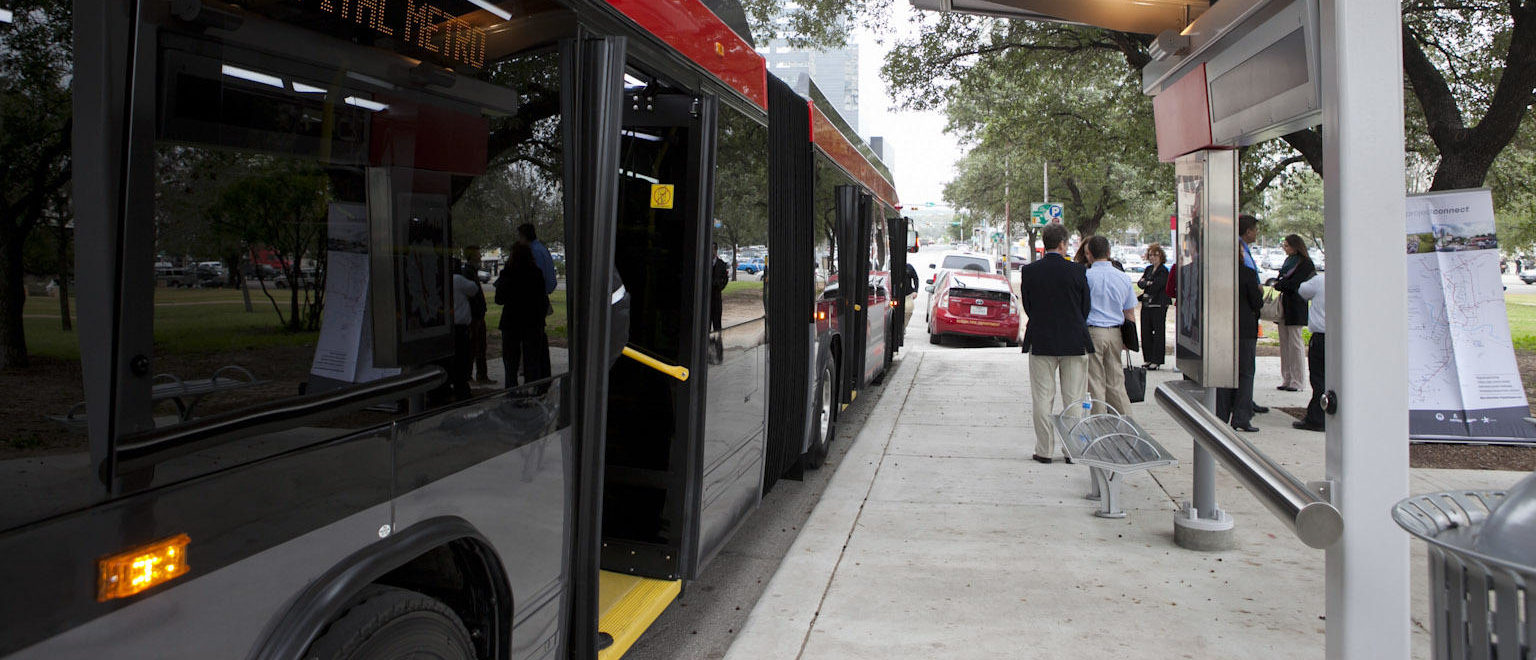
CapitolMetro Rapid service preview, Nov. 12, 2013.
On June 3, Austin’s Capital Metro became the latest transit agency to launch a completely redesigned bus network. The network overhaul, dubbed Cap Remap, emphasizes more high-frequency routes, seven-day frequent service, and more direct routing.
Todd Hemingson, Capital Metro’s vice president of strategic planning and development, said the rollout was smooth “in terms of bus operator feedback, operations, and the logistics of actually implementing – the execution side of things was excellent.” He noted that customer service calls doubled the week the new network launched, but were back to normal levels by the third week. Local press coverage at the time also noted the absence of chaos or significant complaint.
We recently sat down with Hemingson to discuss what it takes to execute a successful bus network redesign and what other transit systems should know if they’re doing one. Here are some lessons from Capital Metro’s experience:
Keep the front lines and the front office “on message”
Redesigning a bus network from scratch is a sprawling task, but leaders need a concise elevator speech that summarizes “what you’re trying to do, why you’re trying to do it, and how it can help the agency be successful,” Hemingson said.
Staff at all levels of the agency have to be able to give the same speech. “Your bus operators are the face of your agency for most customers,” Hemingson said. “You don’t want them or other front-line staff saying ‘this plan is stupid’ or ‘I don’t know what they’re doing; I just drive the bus.’ That kind of stuff is very counterproductive.“
Just as critical is getting local elected officials and agency board members bought in early. “Get a strong commitment from your policymakers on your goals and objectives early on,” Hemingson said. “You’ve got to document that and use it to remind them of what you’re trying to accomplish,” especially near the end of the process when opponents start testifying at transit board meetings.
Make the redesign a moment for larger change
Ambitious network redesigns are an opportunity to do other ambitious things, like improving wayfinding or simplifying the fare structure. In Capital Metro’s case, Hemingson said that new CEO Randy Clarke pushed programs to improve shelters and customer service.
Cap Remap also provided a chance to win street-design changes that simplify bus operations. For example, the transit agency had been asking the city of Austin for years to reconfigure an intersection where buses could not make a right-hand turn. “When it was a one-off ask, we never could get over the hump,” Hemingson said. But Capital Metro was ultimately able to convince Austin to make not just one but nineteen signal, bus stop location, and intersection changes to help the success of the network redesign. “It was harder for them to say no when they were aware of this major effort we had underway,” Hemingson said.
Learn from peers that have done it
Capital Metro’s planning staff regularly consulted with their counterparts at Houston METRO and the Maryland Transit Administration, both of which had launched new bus networks in recent years, to learn from their experience.
One lesson was the importance of “major, major outreach” in the weeks before and after the launch of the new network. Hemingson said Capital Metro staff pulled “eight-hundred outreach shifts of 3 to 4 hours each, all over the system.” Staff had brochures, maps, and tablets with the ability to run trip-planning software, all in multiple languages.
TransitCenter’s report Untangling Transit includes more lessons from transit agencies that have redesigned their bus networks.
A successful network redesign is not the end – it’s a new beginning
A Cap-Remap-style redesign makes transit relevant to more people, which also means more eyes on parts of the transit experience that haven’t been improved. In Austin, that includes the walk to transit.
“One of the lessons we learned is that if you’re going to go to more of a grid-based system and you’re going to have more on-street connections, then you really need to look at the pedestrian experience of those intersections,” Hemingson said. “We’re still making modifications to stop locations where we’ve seen transfer activity that is higher than we had originally anticipated. But trying to think more in advance would be even better.”
There’s little time for an agency to rest on its laurels. In other places that have redesigned bus networks, expectations have been raised for what transit can deliver. Capital Metro’s next priority is Project Connect, a plan for regional high-capacity transit, which may go before voters in 2020.
“We want [riders] to start to see us as being more relevant and useful, and to expect more,” Hemingson said. “We’re convinced that for our city and our region to be successful, we’ve got to have better transit.”
 On the Brink: Will WMATA’s Progress Be Erased by 2024?
On the Brink: Will WMATA’s Progress Be Erased by 2024?
The experience of being a WMATA rider has substantially improved over the last 18 months, thanks to changes the agency has made like adding off-peak service and simplifying fares. Things are about to get even better with the launch of all-door boarding later this fall, overnight bus service on some lines starting in December, and an ambitious plan to redesign the Metrobus network. But all of this could go away by July 1, 2024.
Read More A Bus Agenda for New York City Mayor Eric Adams
A Bus Agenda for New York City Mayor Eric Adams
To create the “state-of-the-art bus transit system” of his campaign platform, Mayor Adams will have to both expand the quantity and improve the quality of bus lanes. We recommend these strategies to get it done.
Read More